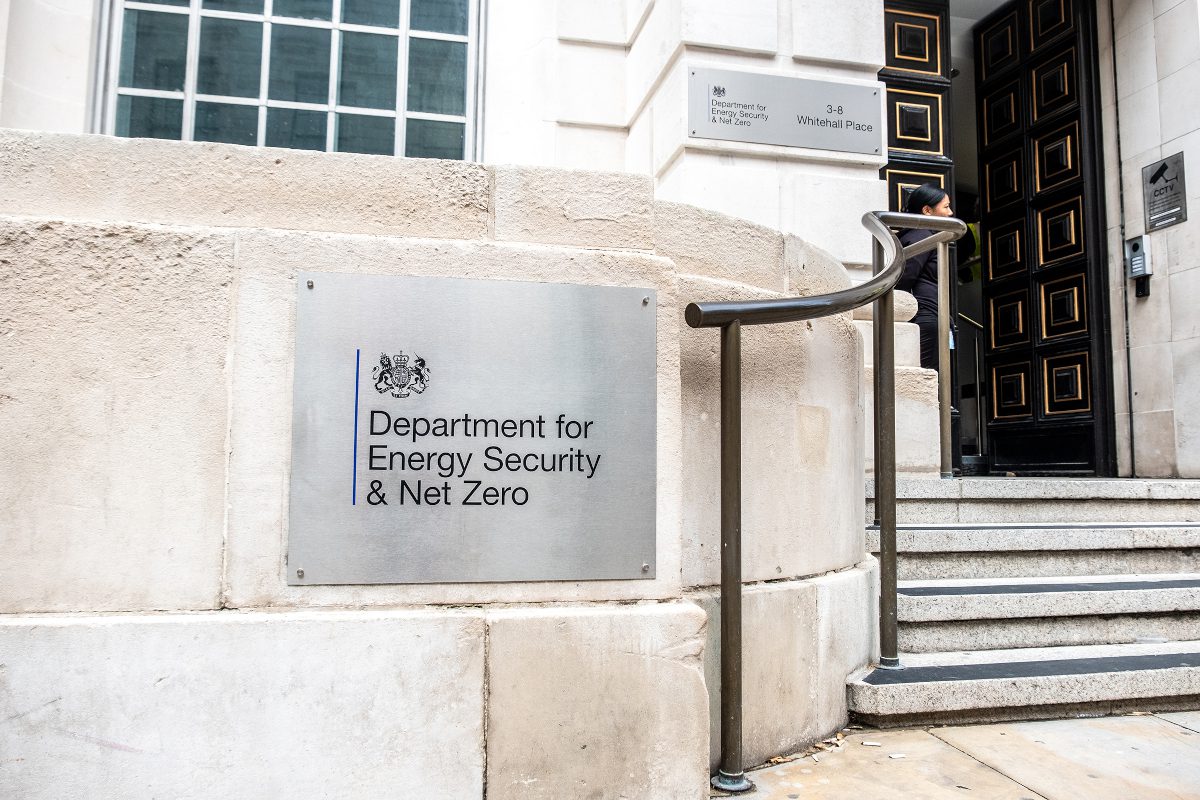
Eleni Diamantopoulou writes
The Energy Act 2023 (the Act) is finally here. After sixteen months of consideration in Parliament including a short ping-pong round between the houses of Parliament and Lords, one of the biggest pieces of energy legislation in recent years has been received with enthusiasm in the public and private energy sector.
The Act seeks to strike a balance in the so-called energy trilemma: transitioning the energy sector to net zero in an affordable way for households and businesses while securing resilient supply of energy.
This brief analysis is an introduction to some of the changes brought by the Act, with more targeted insights to follow.
£100 billion of private investment: A breakdown
The Act seeks to implement the British Energy Security Strategy (BESS) that will unlock £100 billion of private investment in the energy sector and create 480,000 jobs by 2030.
How? By putting in place the enabling primary legislation that bridges legal gaps, creates new laws, or brings clarity to existing laws.
Indeed, in WBD’s recently published 2024 Energy Transition Outlook Survey Report, businesses still identify effective legislation as a key accelerator of the energy transition.
Let us have a look below at some of the key areas in which the Act will support private investment.
Carbon capture, utilisation, and storage (CCUS) and hydrogen: The Act sets a clear economic licensing framework for CCUS and hydrogen transportation and storage, providing financial support through industrial carbon capture (ICC) and hydrogen business models.
The UK Government has made significant progress in financial support frameworks having recently concluded the consultation process, and by having published the almost final versions of both the hydrogen and ICC contracts.
The Act also empowers the UK Government to fund hydrogen though a levy and to set strategic priorities in CCUS though a CCUS Strategy and Policy Statement.
Decarbonisation of heat: The regulation of heat networks is one of the key changes which the Act brings, following a recommendation of the Competition and Markets Authority (CMA).
The design of consumer protection secondary legislation has already started and a relevant consultation closed recently.
The Act does more though to drive net zero in the heat sector by introducing heat network zoning in England, and low carbon heat schemes to allow for the creation of markets for low carbon heating appliances like heat pumps.
Energy Storage: The Act brings the missing clarity that was blocking investment by adding a clear definition for energy storage. It also amends the Electricity Act 1989 to state storage qualifies as a generation subset.
Multipurpose interconnectors (MPIs): MPIs are a novel asset class, which are subsea cables connecting both the electricity system of Great Britain with neighbouring countries and offshore generation stations like wind farms with the mainland network. The Act bridges a legislative gap by introducing a definition and a licensing regime for MPIs.
Nuclear: The Act includes several changes for nuclear; licensing for and regulating of disposal facilities, changes in the decommissioning regime, and acceding the Convention on Supplementary Compensation for Nuclear Damages to name some. Perhaps the most noticeable change is the establishment of the Great British Nuclear (GBN), evolving the nuclear sector.
Offshore wind: The Act delivers on the implementation of the offshore wind environmental improvement package (OWEIP) through new measures that are expected to halve consenting times for offshore wind projects whilst protecting the environment.
These include tailored Habitat Regulations Assessments (HRA) and compensation for inadvertent environmental impacts of offshore wind projects in a strategic and coordinated fashion through Strategic Compensatory Measures and Marine Recovery Fund(s).
New technologies: The Act supports the UK’s ambition to be a global leader in new technologies through explicit provisions on fusion, CCUS, hydrogen, energy storage, recycled carbon fuels and nuclear derived fuels amongst others. Additional provisions indirectly promote investment in new technologies such as investment in small modular reactors through GBN, with a competition to allocate funds already on the way.
Four new strategic entities in the energy system
The Act sets up at least four new entities with new responsibilities or existing responsibilities transferred to them.
The Independent System Operator and Planner (ISOP): Known broadly through consultations as the Future System Operator (FSO), this new independent body will bring a whole systems approach to energy infrastructure joining electricity, gas, and new technologies networks and market functions.
The FSO will have three strategic objectives that correspond to the three aspects of the energy trilemma: a net zero duty aligned with the Climate Change Act 2008 (CCA) targets and carbon budgets, ensuring security of energy supply, and promoting a coordinated and cost-efficient energy system operation.
The ISOP will be called on to balance these three objectives and make trade-offs if necessary in cases of conflict. Several consultations and decisions on the ISOP already mark significant progress in having the new strategic body operational in 2024.
Great British Nuclear (GBN): A public company, GBN is the delivery vehicle through which the UK Government will implement new nuclear projects and policy. Investors can rest assured GBN will help to de-risk investment through co-funding of projects to make the ambition of 24 GW of new nuclear generation by 2050 more achievable.
Zone Coordinators: The Zone Coordinator, who will possibly be a local government, will play a lead role in zone identification, enforcement of zone requirements, and information-sharing in moving to heat network zoning in England.
Code managers: The Act establishes a new governance framework for energy codes, with code managers to be licensed by and held accountable to Ofgem. This role will take responsibility for code governance from existing industry led bodies, bringing more independence and transparency to energy codes governance.
At least eight new powers and duties for Ofgem: Ofgem is one of the protagonists in implementing the vision set within the Act, gaining new roles, new duties, and new powers.
- Net Zero duty: Ofgem had already a duty to consider reductions in greenhouse gases in its decision-making process But this was too broad and it was not clear whether it included the net zero targets and 5-year carbon budgets of the CCA. Section 202 brings clarity and adds a net zero duty for Ofgem.
- Energy code governance: Ofgem is the key authority to deliver changes in energy codes governance and to move away from the previous industry-led framework. Some of the new functions include the duty to publish an annual strategic direction on how energy codes should evolve, the power to amend the codes in limited circumstances, and the power to issue directions to IT system bodies to support the energy market.
- Regulator: Ofgem is the economic regulator for the licensing of CCUS and hydrogen transportation and storage, as well as the regulator for heat networks. Ofgem will also monitor and regulate the relevant electricity operator and gas system planner licences of the ISOP.
- Licensing: The Act expands the licensing powers of Ofgem, with the body appointed as the licensing authority of heat networks in Scotland, as well as now being able to grant licences for MPIs and code managers.

The Act serves sixty million…
So, the Energy Act brings many changes, but where do those changes apply and when do they take effect?
Almost all parts of the Act apply to England and Wales and Scotland, but some of the Act’s provisions have a specific territorial extent. For example, the provisions on heat network zoning apply only to England.
The Act’s extent is more restricted in Northern Ireland, where some parts s such as the licensing of hydrogen pipeline projects, the changes regarding the ISOP, the governance codes and market reform and consumer protection do not apply.
On the other hand, the commencement of most of the provisions of the Act depends on the adoption of secondary legislation, but certain sections – for example, the designation of a hydrogen counterparty and provisions governing low carbon heat schemes and heat networks – are applicable as of the day when the Act was passed, on 26 October 2023.
Several other provisions enter into force after 26 December 2023, and these include CCUS and hydrogen transport and storage licensing and revenue support, Ofgem’s net zero duty, and OWEIP.
From Great British Nuclear to Great British Energy
Politics can be a key obstacle to achieving the net zero goals according to the feedback which we received in our 2024 Energy Transition Outlook survey report.
We are currently in a pre-election period in the UK and the USA, with the main opposition party in the UK – the Labour party – announcing a manifesto for energy which declares an aim to “switch on Great British Energy”, proposing the creation of a National Wealth Fund to support investment in gigafactories, clean steel plants, ‘renewable-ready ports’, green hydrogen, and energy storage.
“Great British Energy” (GBE) will possibly be the delivery body of Labour’s energy aspirations, and like GBN, it will be a publicly owned company eventually absorbing GBN.
Labour says GBE will own, manage and operate energy generation projects, set a super-tender to unblock grid infrastructure, and put local communities at the heart of the clean energy transition. The Labour manifesto also adds to ISOP’s functions a decentralised and local dimension.
What is coming up next?
Without a doubt, the Act is a significant milestone in the decarbonisation pathway of the UK. But while it is lengthy at almost five hundred pages, more is needed with its success depending on the adoption of massive secondary legislation.
The UK Government has already been running several consultations relevant to the enabling legislation and has even adopted the first regulations on the Energy Savings Obligations Scheme and Energy Network Mergers (both topic not covered by this article).
The devil will be in the detail as these regulations touch upon complex and technical matters. Other pieces of legislation (for example, the recently adopted Levelling Up and Regeneration Act 2023 and the upcoming energy market reform through the Review of Electricity Market Arrangements (REMA)) will possibly affect the pace at which the Act delivers on its objectives.
Whatever the pace, the Act has already accelerated the countdown to net zero.






